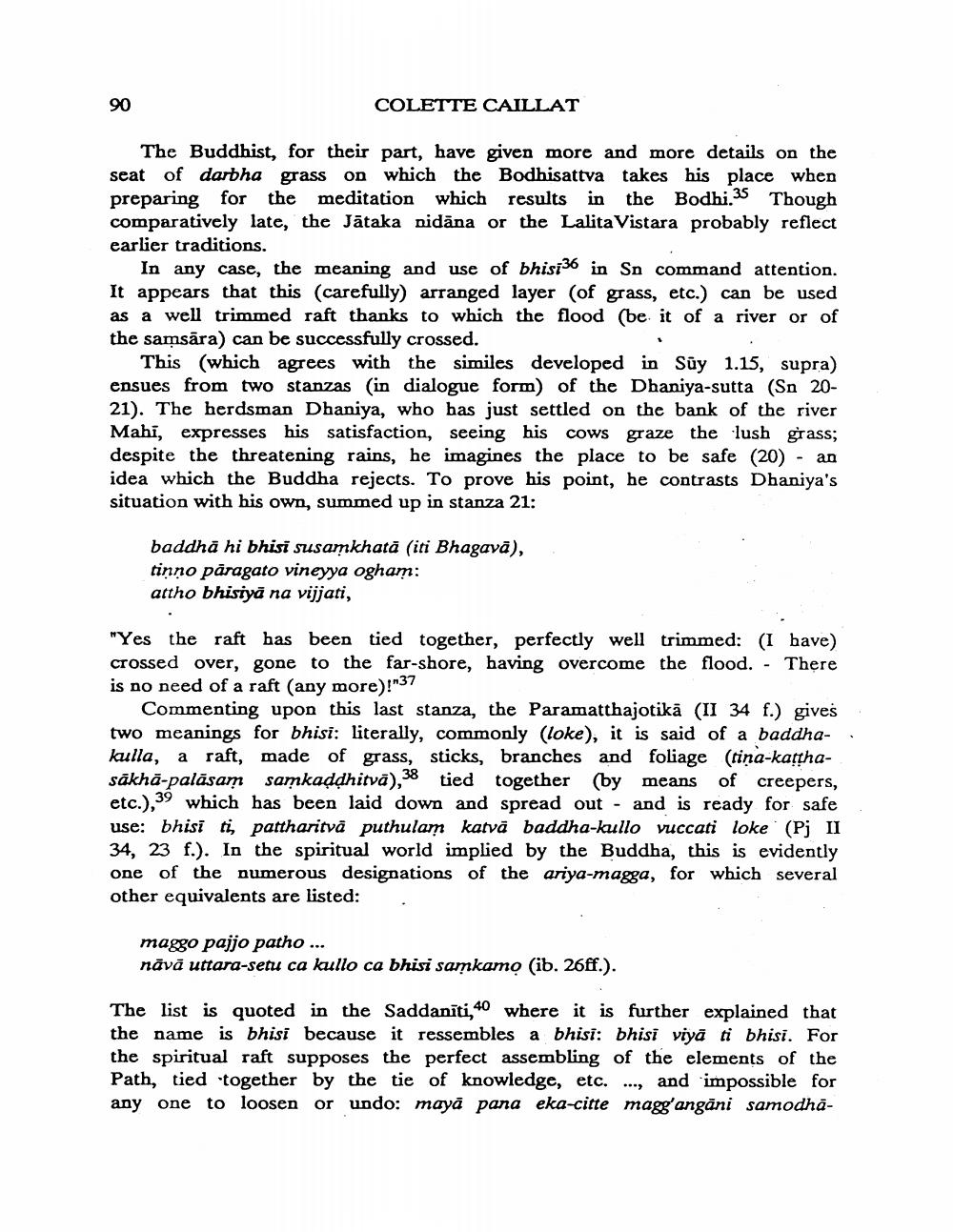________________
90
COLETTE CAILLAT
The Buddhist, for their part, have given more and more details on the seat of darbha grass on which the Bodhisattva takes his place when preparing for the meditation which results in the Bodhi." Though comparatively late, the Jātaka nidāna or the Lalita Vistara probably reflect earlier traditions.
In any case, the meaning and use of bhisi36 in Sn command attention. It appears that this carefully) arranged layer (of grass, etc.) can be used as a well trimmed raft thanks to which the flood (be it of a river or of the samsāra) can be successfully crossed.
This (which agrees with the similes developed in Sãy 1.15, supra) ensues from two stanzas (in dialogue form) of the Dhaniya-sutta (Sn 2021). The herdsman Dhaniya, who has just settled on the bank of the river Mahi, expresses his satisfaction, seeing his cows graze the lush grass; despite the threatening rains, he imagines the place to be safe (20) - an idea which the Buddha rejects. To prove his point, he contrasts Dhaniya's situation with his own, summed up in stanza 21:
baddha hi bhisi susamkhatā (iti Bhagavā), tinno pāragato vineyya ogham: attho bhisiya na vijjati,
"Yes the raft has been tied together, perfectly well trimmed: (I have) crossed over, gone to the far-shore, having overcome the flood. - There is no need of a raft (any more)!"37
Commenting upon this last stanza, the Paramatthajotikā (II 34 f.) gives two meanings for bhisi: literally, commonly (loke), it is said of a baddhakulla, a raft, made of grass, sticks, branches and foliage (tiņa-kathasākhā-palāsam samkaddhitvā),38 tied together (by means of creepers, etc.),39 which has been laid down and spread out - and is ready for safe use: bhisi tipattharitvă puthulam katvā baddha-kullo vuccati loke (Pj II 34, 23 f.). In the spiritual world implied by the Buddha, this is evidently one of the numerous designations of the ariya-magga, for which several other equivalents are listed:
maggo pajjo patho ... nāvā uttara-setu ca kullo ca bhisi samkamo (ib. 26ff.).
The list is quoted in the Saddanīti,40 where it is further explained that the name is bhisi because it ressembles a bhisi: bhisi viyā ti bhisi. For the spiritual raft supposes the perfect assembling of the elements of the Path, tied together by the tie of knowledge, etc. ..., and impossible for any one to loosen or undo: mayā pana eka-citte magg'angāni samodha




